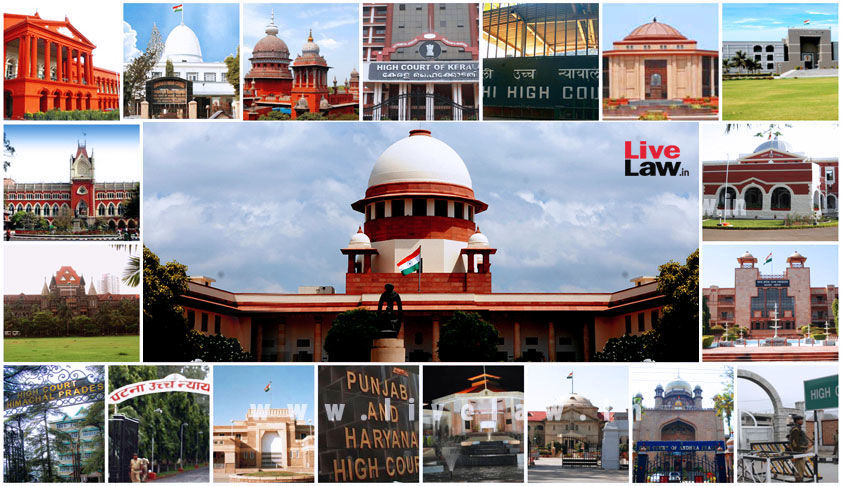 |
|
The Supreme Court of India recently issued a significant order aimed at addressing the substantial backlog of pending criminal appeals in High Courts across the nation. This order, delivered on January 30th, relaxed the previously stringent conditions governing the appointment of ad hoc judges. Specifically, the Court suspended a condition established in its 2021 judgment, which mandated that ad hoc appointments could only be made when the number of vacancies in a High Court exceeded 20% of its sanctioned strength. This decision marks a pivotal shift in the approach to tackling judicial delays and underscores the urgency of the situation.
The 2021 ruling, delivered by a bench comprising then Chief Justice of India S.A. Bobde and Justices Sanjay Kishan Kaul and Surya Kant, stemmed from a Public Interest Litigation (PIL) filed by the NGO Lok Prahari under Article 32 of the Indian Constitution. The PIL highlighted the mounting arrears of cases in High Courts and urged the Court to invoke Article 224A, which permits the appointment of retired High Court judges as ad hoc judges. The 2021 judgment established a detailed procedure for such appointments, drawing upon Paragraph 24 of the Memorandum of Procedure (MoP) for the appointment of judges. While acknowledging that the MoP lacks the force of law under Article 141, the Court suggested it serve as a basis for the appointment process. The MoP itself originated in 1998, following the Supreme Court's judgment in Supreme Court Advocate-on-Record Association v. Union of India (Second Judges case).
The procedure outlined in the 2021 judgment involves a multi-step process that begins with the Chief Justice of the High Court seeking consent from the retired judge. Subsequently, the Chief Justice informs the Chief Minister of the State, who then forwards the recommendation to the Governor. The Governor communicates this to the Union Minister of Law and Justice, who consults the Chief Justice of India for advice. This advice, along with the recommendation, is then forwarded to the Prime Minister, who in turn advises the President of India. Finally, upon Presidential consent, the appointment is officially notified in the Gazette of India by the Chief Minister. The tenure of an ad hoc judge is typically between two and three years. The 2021 judgment also identified several ‘trigger points’ that could necessitate the appointment of ad hoc judges, including vacancies exceeding 20% of the sanctioned strength, cases pending for over five years, and a consistently lower disposal rate compared to the rate of case filings.
The recent relaxation of the 20% vacancy threshold represents a crucial change. The January 30th order, led by Chief Justice Sanjiv Khanna, explicitly put this condition on hold. The Court clarified that each High Court can now appoint between two and five ad hoc judges, provided the total number does not surpass 10% of the sanctioned strength. The primary role of these judges is to tackle the backlog of long-pending cases, particularly those older than five years. However, the Chief Justice of the High Court retains discretion to assign cases of shorter duration if deemed necessary. The Court also addressed the composition of benches, initially stipulating that division benches could only comprise ad hoc judges to hear old cases. However, this restriction was stayed in the recent order. Now, ad hoc judges are expected to sit alongside senior judges in division benches dealing with criminal appeals.
The emoluments and allowances for ad hoc judges are stipulated to be on par with those of permanent judges, excluding pension. This is to maintain the dignity of the office, considering the restrictions on undertaking other legal work. The costs are met by the Consolidated Fund of India, and housing is provided either through rent-free accommodation or a housing allowance. It’s important to note that the 2021 judgment emphasized that ad hoc appointments are not meant to substitute for regular appointments, but rather as a supplementary measure to address the urgent need for faster case disposal. The ongoing challenge remains to balance the benefits of expediting the judicial process with the need to ensure the maintenance of judicial standards and the timely filling of permanent judicial vacancies. The effectiveness of this approach in reducing the case backlog and improving the efficiency of the High Courts will require careful monitoring and evaluation in the coming years.
Source: Explained| Ad Hoc Judges In High Courts : Procedure For Appointment & Tenure
